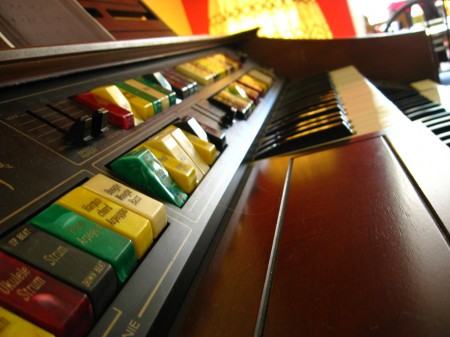A study being presented at the annual meeting of the American Geophysical Union claims to have found the first concrete evidence of ‘arctic amplification’ – the phenomenon in which the loss of sea ice exposes water that reflects less sunlight than the ice did, thus causing further warming:
Climate-change researchers have found that air temperatures in the region are higher than would be normally expected during the autumn because the increased melting of the summer Arctic sea ice is accumulating heat in the ocean. The phenomenon, known as Arctic amplification, was not expected to be seen for at least another 10 or 15 years and the findings will further raise concerns that the Arctic has already passed the climatic tipping-point towards ice-free summers, beyond which it may not recover.
As with many of the other things happening in the Arctic, the phenomenon is not unexpected but the timing is. Partly, that reflects the imperfect (or totally absent) integration of feedback effects into climatic models.
As with so much other Arctic news, one can only hope that this will be a reminder of the urgency of mitigating greenhouse gas emissions. It is possible that doing so is more urgent than addressing the ongoing financial crisis and, from a long-term perspective, it is certainly a lot more important.


Does the 10-15 year timescale reflect when this phenomenon was first expected to occur, or when it was first expected to be identified?
The dynamics of it seem quite simple, and you would expect to see it happening as soon as there was large-scale ice loss, no?
The linked article says this:
“However, in a study to be presented later today to the annual meeting of the American Geophysical Union in San Francisco, scientists will show that Arctic amplification has been under way for the past five years, and it will continue to intensify Arctic warming for the foreseeable future.
Computer models of the global climate have for years suggested the Arctic will warm at a faster rate than the rest of the world due to Arctic amplification but many scientists believed this effect would only become measurable in the coming decades.”
Also:
“Temperature readings for this October were significantly higher than normal across the entire Arctic region – between 3C and 5C above average – but some areas were dramatically higher. In the Beaufort Sea, north of Alaska, for instance, near-surface air temperatures were more than 7C higher than normal for this time of year. The scientists believe the only reasonable explanation for such high autumn readings is that the ocean heat accumulated during the summer because of the loss of sea ice is being released back into the atmosphere from the sea before winter sea ice has chance to reform. “
The Great Lakes are also losing ice. Presumably, this has the same changed-albedo feedback effect as the loss of sea ice.
Crisis. This is a decisive event or turning-point. Many of the economic and political troubles wrongly described as crises are really persistent difficulties, sagas or affairs.
Arctic climate change at ‘tipping point’
New report says Arctic climate change is happening faster than anyone anticipated and may soon be forcing more rapid warming on the rest of the planet
Bob Weber
The Canadian Press Last updated on Wednesday, Sep. 02, 2009 03:39AM EDT
A new report says Arctic climate change is happening faster than anyone anticipated and may soon be forcing more rapid warming on the rest of the planet.
“It is a tipping point,” said Craig Stewart of the World Wildlife Fund, which was to release the report Wednesday in London.
The report is an attempt to update the work of scientists involved in the 2007 Intergovernmental Panel on Climate Change as world leaders prepare to gather in Copenhagen in December to discuss how to deal with the problem. The conclusion of many of those same top researchers is that changes are occurring much more quickly – especially in the Arctic – than was believed even two years ago.
“We thought by 2050, multi-year [sea] ice would be cut in half,” said Mr. Stewart from Ottawa. “Well, it happened in 2007.”
But the biggest worry is the “methane hydrates” – a strange, slushy form of methane frozen in ice molecules that exists in vast volumes in permafrost and continental shelves around the circumpolar globe. Cold and high pressure have so far kept that methane – a greenhouse gas 25 times more potent than carbon dioxide – out of the atmosphere.
Sharp rise in Arctic temperatures now inevitable – UN
Temperatures likely to rise by 3-5C above pre-industrial levels even if Paris goals met
Rain to replace snow in the Arctic as climate heats, study finds | Polar regions | The Guardian
https://www.theguardian.com/environment/2021/nov/30/rain-replace-snow-arctic-climate-heats-study
38 C temperature in Siberia smashed Arctic heat record, UN agency confirms
https://www.cbc.ca/news/science/wmo-heat-record-1.6284901